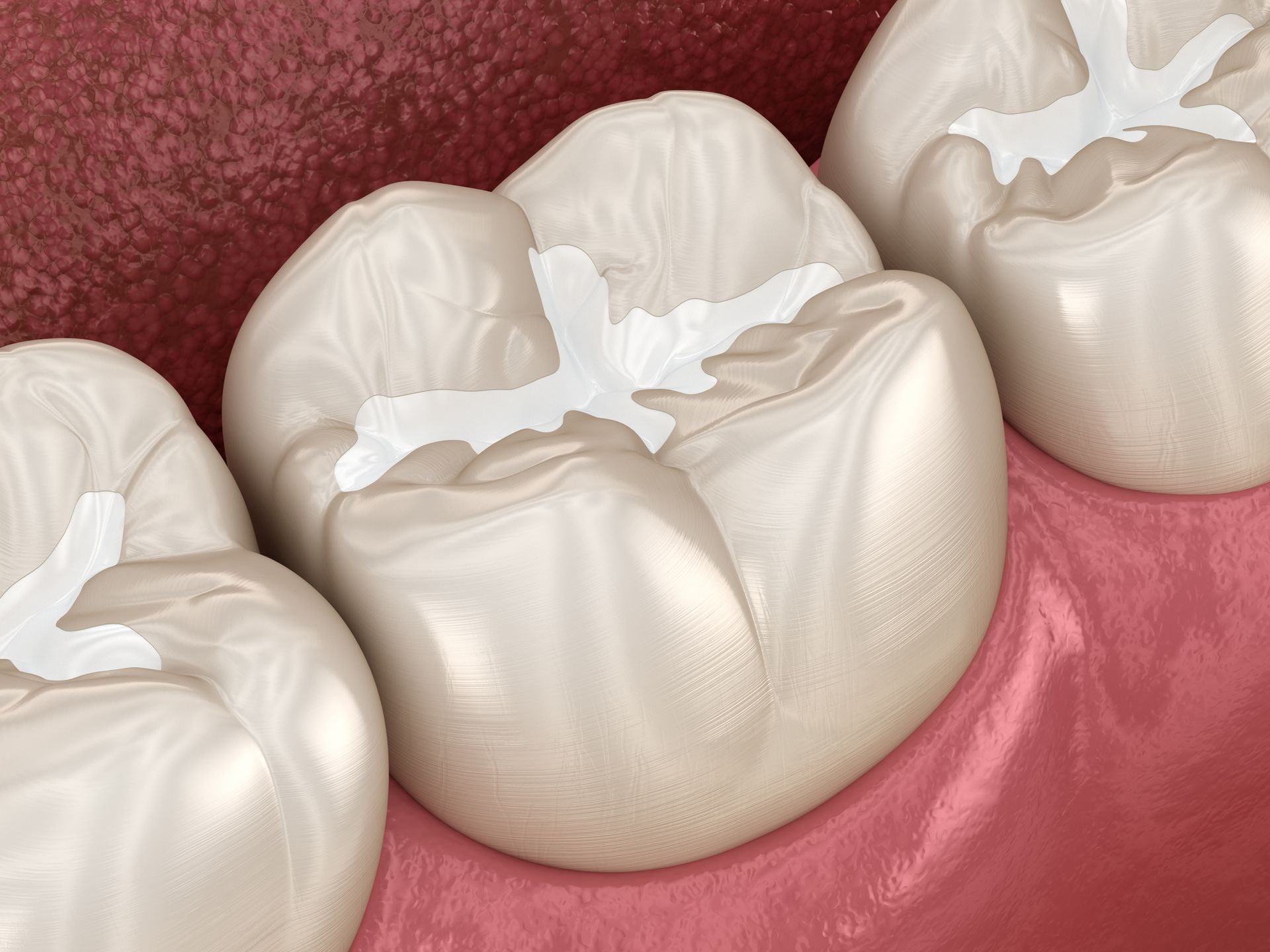Here is What We are Doing

How White Fillings Help Maintain Your Child’s Smile
Kids and cavities sometimes go together like peanut butter and jelly. Between snack time, juice boxes, and the occasional “oops, forgot to brush,” cavities can sneak in faster than you can say “sugar bug.” But thanks to white dental fillings, your child can still show off a strong, confident smile without the telltale silver.
White fillings, also known as white composite fillings, are made from a tooth-colored resin that blends seamlessly with natural teeth. They’re especially popular for kids, not only for their good looks, but because they’re safe, durable, and less invasive than traditional silver (amalgam) fillings.
Whether your child has their first tiny cavity or needs a replacement for an old metal filling, white fillings offer a modern solution that supports both oral health and self-esteem. No shiny metal. No reason to hide that smile. Just strong, natural-looking teeth ready to take on school pictures, snack time, and everything in between.
What Are White Composite Fillings and How Do They Work?
White composite fillings are made from a blend of plastic and glass materials designed to mimic the look and function of natural tooth enamel. They are used to repair minor to moderate tooth decay and small fractures in teeth. They bond directly to the tooth surface, which allows the dentist to preserve more of the natural tooth structure during the procedure.
The process is simple and kid-friendly:
- Diagnosis: The dentist identifies a cavity or damage using visual exams and possibly digital x-rays.
- Preparation: The decayed or damaged portion of the tooth is removed carefully and gently. Don’t worry, numbing gel and distractions are part of the kid-friendly experience.
- Bonding: A special bonding agent is applied to help the composite adhere to the tooth.
- Layering the Resin: The white composite is applied in layers and hardened with a curing light. This step is kind of like tooth arts and crafts — only with much cooler tools.
- Shaping and Polishing: The dentist shapes the filling to fit the natural contours of the tooth and polishes it to a smooth, glossy finish.
Because the composite bonds directly with the tooth, there’s less drilling and fewer trips back for repairs. Plus, the results are virtually invisible. Your child can smile without anyone knowing they had a filling.
Top Benefits of White Fillings for Teeth
Sure, silver fillings still exist. But why go old-school when white fillings bring so many advantages — especially for kids?
Here’s why white composite fillings are the go-to choice for modern pediatric dentistry:
- Aesthetically pleasing: White fillings for teeth match the natural shade of your child’s teeth, making them almost impossible to detect. No more metal mouths.
- Preserve more of the tooth: Less tooth structure needs to be removed for white fillings to work. That’s great for your child’s long-term oral health.
- Mercury-free: Unlike traditional amalgam fillings, white composite fillings do not contain mercury. That’s peace of mind for parents.
- Durable for daily wear” Kids chew, snack, and talk a lot. Composite fillings are designed to hold up under pressure — even if that pressure involves gummy bears or popcorn.
- Fewer replacements: Because white fillings bond tightly with the tooth, they’re less likely to fall out or need replacement in the near future.
- Flexible use: They can be used on front and back teeth, for both small and medium-sized cavities.
- Fast and comfortable: With modern techniques, getting a white filling is quick and usually pain-free. Plus, dentists often distract young patients with cartoons or music during the process.
In short, white fillings are a win for your child’s smile and your peace of mind.
When Does Your Child Need a White Filling?
Even the most diligent brushers and flossers can get cavities. Kids are still learning proper oral care techniques, and their enamel is softer than adult enamel, making them more vulnerable to decay. So how can you tell when your child might need a white dental filling?
Here are some signs to watch for:
- Complaints of tooth pain: If your child is suddenly sensitive to cold or sweets or complains of a toothache, it could be a cavity.
- Visible discoloration: Dark spots, white chalky areas, or tiny holes in the tooth may signal decay.
- Avoiding food: If your child is chewing on only one side or avoiding certain foods, a cavity might be the reason.
- Bad breath or a funny taste: Decaying food particles trapped in cavities can cause odor or unpleasant taste.
- X-ray confirmation: Sometimes, cavities hide between teeth or below the surface. That’s where digital x-rays come in handy.
Even baby teeth matter. Leaving decay untreated, even in primary teeth, can lead to infections, pain, and long-term damage to adult teeth developing below. White fillings are a simple solution that helps restore your child’s comfort and prevent bigger issues down the road.
Trusted Pediatric White Fillings in Amarillo, TX
Let’s Keep That Smile Bright — Call Amarillo Super Smiles for Kids
At Amarillo Super Smiles for Kids, we believe every child deserves a healthy, happy smile they can be proud of. Our experienced team offers gentle, effective cavity treatment using white dental fillings that blend beautifully with your child’s natural teeth. No silver, no stress — just bright, confident smiles and healthy teeth that last.
We proudly serve Amarillo, TX, and the surrounding areas, offering a full range of pediatric dental services including digital x-rays, dental cleanings, fluoride treatments, and more. Whether it’s your child’s first cavity or a regular checkup, we make every visit positive, playful, and pain-free.
Call us today at
(806) 581-4180 to schedule your child’s appointment and let us help protect their smile with safe, strong, and natural-looking white fillings.
FAQs
Are white fillings safe for children?
Yes. White composite fillings are non-toxic, mercury-free, and completely safe for pediatric use. They’re a great option for long-term oral health.
Do white fillings hurt during the procedure?
Not at all. Most children feel little to no discomfort. Pediatric dentists use gentle techniques, numbing gels, and kid-friendly distractions to keep your child comfortable.
How long does a white filling procedure take?
Typically, the process takes about 30 to 60 minutes, depending on the size and number of cavities.
Can white fillings fall out?
They can loosen over time if exposed to extreme chewing pressure or if decay forms around them. Regular dental visits help catch these issues early.
Are white fillings covered by insurance?
Many dental insurance plans cover white fillings, especially for front teeth. It’s best to check with your provider to confirm your coverage.











